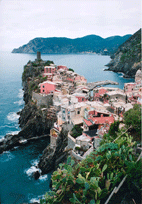Journey to Morocco: Irish historical and cultural legacy

 Between the Atlantic Ocean and the Mediterranean Sea, situated at Morocco’s north-western tip, Tangier is often referred to as the ‘crossroads of civilization’. Facing the Strait of Gibraltar, Tangier holds a strategic position between Europe and Africa that has been coveted and largely exploited through its long and tortuous history. Once an important Roman town, today it has a modern busy port and is a thriving tourist centre.
Between the Atlantic Ocean and the Mediterranean Sea, situated at Morocco’s north-western tip, Tangier is often referred to as the ‘crossroads of civilization’. Facing the Strait of Gibraltar, Tangier holds a strategic position between Europe and Africa that has been coveted and largely exploited through its long and tortuous history. Once an important Roman town, today it has a modern busy port and is a thriving tourist centre.
The Portuguese occupied Morocco from the fifteenth century and in the twentieth century the country was divided into French and Spanish protectorates (1912) and the international zone of Tangier (1923). Morocco gained independence as a sultanate in 1956 and, under the reign of King Mohammed V, Tangier became part of the Kingdom of Morocco in 1957. Rabat is the capital city, the official religion is Islam and the official language is Arabic. Several regional and other dialects are still spoken and many of the old traditional customs abound.
Occupation of Tangier (1661-84)
Occupied by the Portuguese, the port cities of Bombay and Tangier were part of the dowry brought to England’s King Charles II (1630-85) on his marriage to Catherine of Braganza in 1661. She was a Catholic from the dynasty that ruled Portugal from 1640 until the end of the monarchy in 1910, and Brazil in the nineteenth century. Charles II avowed his own Catholicism on his death bed.
An extensively researched work entitled Tangier: England’s Lost Atlantic Outpost 1661-1684 by E.M.R. Routh (London 1912) gives an historic account of the troublesome events of the period. It provides antique maps, photographs, sketches and plans of the city supported by pages of references and original material drawn from wide sources. The period of English rule in many ways is told as the most interesting of the city’s colourful history. Once considered as a jewel in the crown, it is chronicled in other historical literature and lamented in personal testimony as a ‘lost possession of England’.
During occupation, the English undertook major construction work in Tangier including building a hospital where the soldiers were taken care of at the expense of King Charles II. They built forts, a port and the Mole, the structure of which received wide acclaim. The English presence was always uneasy involving unending diplomacy with local sultans, other regional strategic partners and involved much political debate in the English parliament. The latter eventually refused to grant funds to Charles II for the English occupation. Political and other developments forced him to abandon Tangier. For months in 1683-84, his engineers hacked and blasted the walls, forts and the Mole into a mass of rubble.
Irish Tower in Tangier
At the beginning of the English occupation, Irish and Scots regiments were despatched from Dunkirk to Tangier. ‘The Irish Regiment’ consisting of 395 men was commanded by a Colonel Fitzgerald. He was appointed to other positions during the occupation and also became the Captain General.
The plan of the medina or old city in Tangier shows an Irish Tower or Tour des irlandais dating from the seventeenth century. Its history is associated with the occupation of Tangier (1661-84) by King Charles II, King of England, Scotland and Ireland (1660-85). A description indicates a square bastion built at the south-west angle of the ramparts which, according to local tradition, was used to store artillery. Now filled in, it is more used as a squat at the edge of the medina.
Presently in ruin the Irish Tower remains an imposing remnant of the mainly destroyed ancient city walls. Dating principally from the time of the Portuguese, the ramparts were partly consolidated and repaired by the English. Close to the port, rue Portugal provides easy access through one of the gates of the medina to several high stone steps leading to the Irish Tower. It offers a view over some of the bustling medina and beyond to part of the busy modern city of Tangier.
Irish cultural legacy
Said to be drawn by its ‘sultry atmosphere’, amongst the many notables to visit or sojourn in Tangier was the Irish born literary giant, dramatist and playwright, Samuel Beckett (1906-89). His visits to Morocco are documented and also chronicled in literature. His publisher recounts that he was there in 1969 when it was announced that he had been awarded the Nobel Prize for Literature, the ceremony for which Samuel Beckett refused to attend shying publicity of the event.
Cultural and other institutions in many countries around the world hosted events to mark the 100th anniversary of Samuel Beckett’s birth on 13 April 1906. In Morocco there was also celebration of the occasion. In Tangier the French Institute has proudly re-opened the Salle Beckett after several years of closure. It provides cultural, lecture and other facilities to serve the northern Rif region covering the cities of Tangier, Tetouan, Chefchaouen, Ksar el Kebir and Larache.
In honour of the great man who has been described as a ‘literary colossus’, Salle Beckett includes a theatre with seating capacity for almost 200. In the heart of the city, the French Institute is planning to use this creative space to start training in theatrical work and expression. It should take the Irish historical and cultural legacy well into the twentieth-first century.
Ita Marguet, May 2007
Note: Acknowledgement is given to all sources of information used in preparation of this article. The text follows an extended trip to Morocco from February to April 2007 and succeeds published articles on Samuel Beckett by Ita Marguet in 2005 and 2006.


